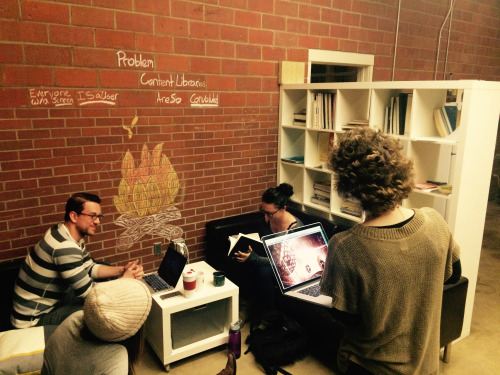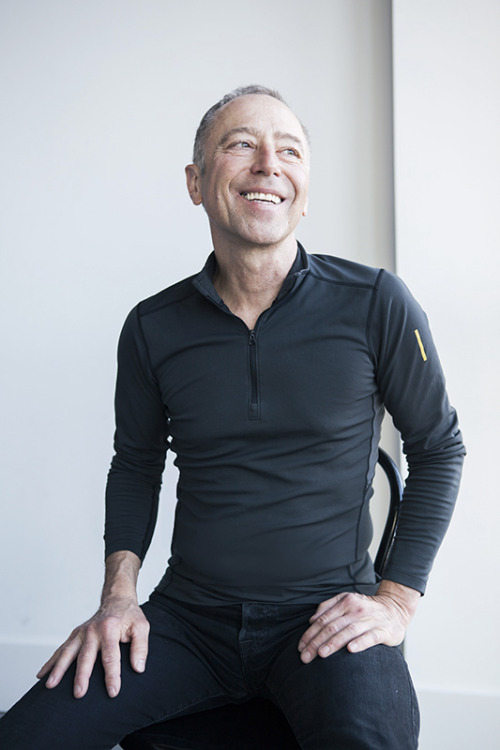This Former Fabrication Depot Will Supercharge Your Digital Skills
7th August 2015

Building 3 is an inconspicuous brick structure on Valmont Road in Boulder. Formerly a fabrication depot for the lumberyard, it now headquarters a workshop of sorts in its sixth year of operation.
BDW, formerly known as Boulder Digital Works, is home to this space, a Colorado University-hosted, 50-week graduate program that trains students to develop marketable talents in the areas of design, research, engineering, and marketing.
“We wanted to create a program that was part of the university, but moved at the pace of industry,” says David Slayden, founder and executive director of BDW.
In 2009, Slayden intuited and analyzed correctly that the graduates leaving CU were lacking preparation for a digital workplace environment. Now, a middle-skills gap and lack of technically qualified candidates is the tech industry’s elephant in the room.

Slayden’s “anti-career,” which has spanned advertising, design, higher education, writing, and music—or what he calls “a series of projects”—clearly impacted this real-time, project-based pedagogy.
“At BDW, we don’t have that dividing line between thinking and making. Doing is part of the thinking, and thinking is part of the doing process.”
The curriculum isn’t alchemy. Students spend approximately five months cultivating a foundation in a number of digital skill sets, whether that’s visual narratives, user experience, or coding. Court Earp, a graduating student and graphic designer, says he’ll leave BDW with a breadth of knowledge in HTML, CSS, and Javascript. This gets back to what Slayden articulated as the reason for creating BDW in the first place.
“The old bottle doesn’t exist,” he says. “The team has grown. It’s no longer a creative director, copywriter, and art director. Now, it’s 10-12 people at the table, so you run into a vocabulary problem. You need to know what you don’t know. You need to understand the language.”
In other words, you need to know how to communicate with a wide range of minds in an agency or tech setting in the modern-day workforce.
The second half of the program applies that foundational knowledge. First, they work with name brand clients like Uber, Allstate, and ESRI, executing design sprints.
“Design sprints come out of the architectural world in charrettes. They are short, really intensive, immersive, concentrated efforts around a problem. They are rushed, but you don’t waste any time,” says Slayden.
In 48 hours, the teams go from concept to creation. Uber asked the students to develop a way to expand their user base to junior high and high-school aged kids. Safety and quality control were high priorities, which you can see by way of design screens provided by Earp.
Meanwhile, the second aspect of what are called “design studios” sports a tall task in team building—developing an entire company from scratch.
During my first visit to BDW, I was ushered into the guts of Building 3 and into the primary classroom, where 17 students sat around handmade desks. The four teams were workshopping their rough pitches in preparation for Demo Day, their version of a thesis defense in front of industry professionals.
Each team distilled their semester-long ideas into a PowerPoint presentation—the standard live or die by the 10-minute presentation.
After the pitches, which varied in polish, style, and content, students critiqued team performances along with the faculty member. While this may not sound dissimilar to anyone who has graduated from an accelerator program, or even art school, many of these students came in with wildly different backgrounds and skill sets. Whereas teams entering an accelerator program go in with certainty about a concept, with who they are working with and with some advanced understanding of their particular industry.
For a team like Artaire, a platform that will attempt to connect artists to collectors, real estate developers and public art initiatives, they readily admit that none of them are artists by trade.
Mackenzie Hawkins, the founder of this project, drew on her inspiration and struggle as a New York City-based actor, realizing that “making it” was not just a result of hard work but also of accessing networks and capital resources. Actors and artists share this struggle and hunger.
“It’s hard for emerging artists to get their foot in the door. People want art but don’t know where to source it and end up going to consultants and spending a premium. It’s also a very closed ecosystem,” says Hawkins.
Yet, after doing their research, which included industry reports and interviews with employees in these verticals, their intuition was right.
“The general consensus was that it’s a real need,” says Earp, Artaire’s Head of Development.
As Hawkins went through her slide presentation in front of her peers, the BDW endgame became more tangible. She spoke about commissions, filters for both the artists and investors, and how a user might interact with the platform.
“Our goal is pretty modest,” Slayden says. “It’s not to hit them with big funding, but of the seed variety or to move them into a Y Combinator or Techstars accelerator.”
He does admit that a high percentage of graduates seek out full-time employment after the program, rather than pursuing their BDW company concept.
“This experience makes them really valuable at a job. They understand the full process. They are capable and conversant in all those areas. They are smart, they are fast, and they get it,” he says.
The real commonality of a BDW candidate and student, Slayden says, lies in their can-do spirit.
“Entrepreneurs love problems. It’s one of the key things our guys and girls do.
“They love problems, and they solve them.”
In our next installment of this series, we further highlight the companies formed out of the BDW program and the challenges they face.
By Daniel Webster
